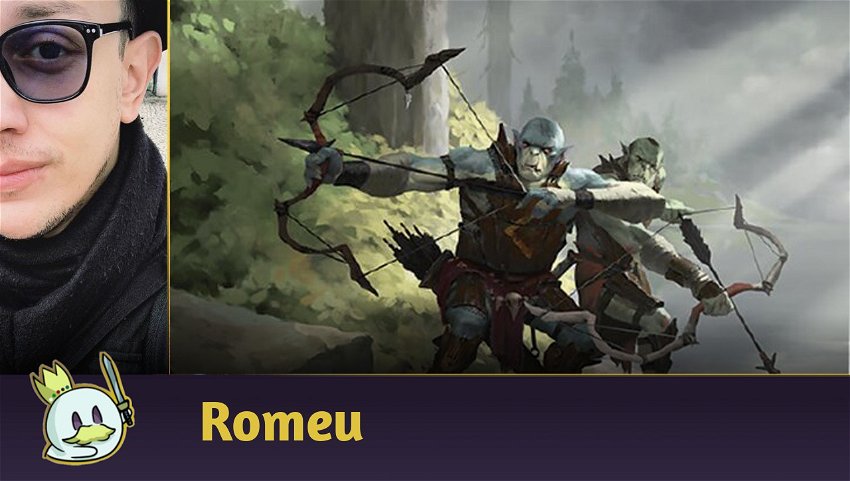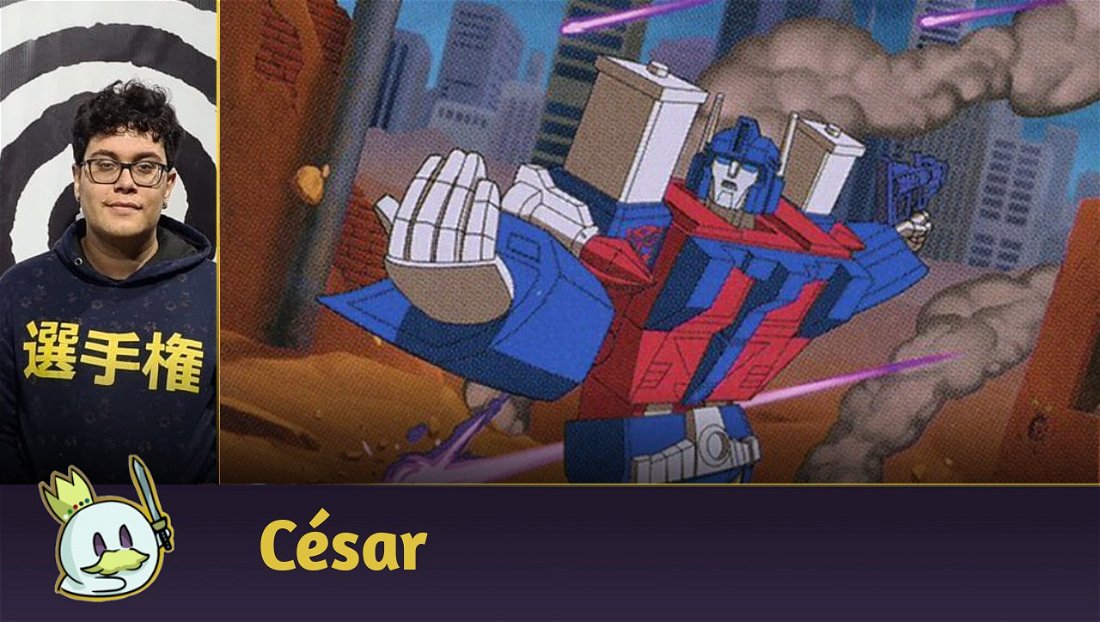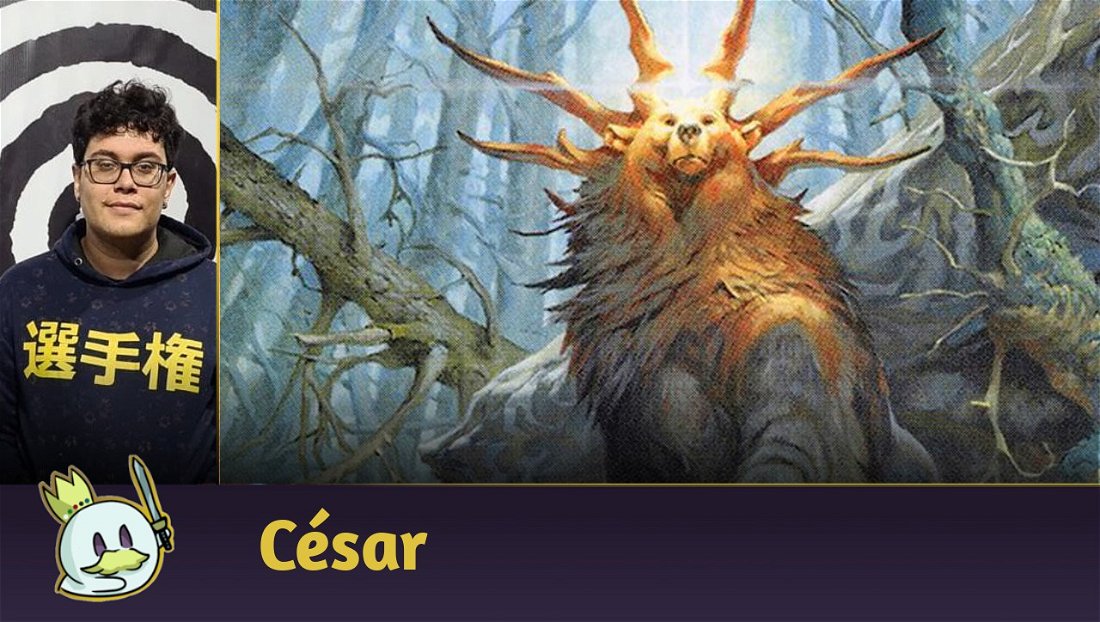It's been a month since Timeless, Magic Arena's new format, was released.
Known as the platform's Vintage, Timeless allows players to use any card released in Magic Arena in its original version, with no rebalancing. The format also doesn't have a banned list, with only three restricted cards - that is, only one copy of each can be used among the 75 cards on the list.

While there are no guarantees that there will be no future interventions and banned cards, Timeless today stands out as the apex of Magic Arena's power level, where the most absurd plays and the most efficient cards are used to compete in a Metagame where, of so many unfair possibilities and power bombs, decks end up balancing each other to the point of establishing a diverse environment.
Ad
In this article, we present the main archetypes in the Timeless competitive scene, based on their appearances in Magic Arena, results in independent events and popularity among players!
10 Decks to know the Timeless Metagame
While we present different decks with good results in the Magic Arena ranked to play Timeless competitively, the positioning of each one on the list does not specifically represent a Tier List, as the format is still very recent and hasn't featured large-scale events yet.
Titan Field
Titan Field is the top of the value chain in Timeless and the format's main inevitability strategy. Its game plan consists of ramping to cast Primeval Titan to search for Field of the Dead and create one or more zombie tokens for each time a land enters the battlefield. Here, the green titan adds even more by multiplying the amount of Field of the Dead in play, in addition to guaranteeing the necessary triggers to establish an unbeatable board position.

To further accelerate this strategy, it is possible to have Primeval Titan in play as early as the third turn thanks to Natural Order, which can sacrifice Arboreal Grazer or Kami of Bamboo Groves to search for the deck's main creature and, consequently, put Field of the Dead onto the battlefield.

Titan Field also has an absurd amount of redundancy, with Once Upon a Time and Fierce Empath helping to find Primeval Titan while Spelunking guarantees extra speed by making lands hit the board untapped.
Like every go big strategy, Titan Field is an excellent option against the most varied Midranges and/or attrition strategies, in addition to guaranteeing inevitability thanks to Field of the Dead, a relatively difficult card to interact in Control matchups.
On the other hand, it suffers against combo and/or Aggro if it doesn't start with the necessary speed to dominate the game in the first four or five turns.
Rakdos Breach
Rakdos Breach was the archetype with the highest swiss score at the first Creator Clash, on January 5th, and can be considered the first "true" competitive deck in Timeless.

With a strategy that moves between Midrange and Combo, it has the already known set of Ragavan, DRC and Bowmasters as its main threat package alongside a dozen interactive cards, such as Thoughtseize, Fatal Push and Lightning Bolt to establish an interactive and fair game plan against the opponent.

On the other spectrum, it mixes Underworld Breach and a Storm package with Dark Ritual, Stitcher's Supplier, Diabolic Intent, Mishra's Bauble and Tendrils of Agony to establish the famous “free-win button”, either suddenly or against an opponent that the deck cannot beat fairly.
Ad
Rakdos Breach is a solid option with various angles, but it can't establish its attrition plan as well as more dedicated lists. Therefore, the right hate against the combo side is quite troublesome when opponents manage to generate more value with their permanents, as its "fair game" can't keep up.
Death’s Shadow
It is possible to find Death's Shadow in different color combinations, but the most famous is the Grixis variant, and most of them follow a similar structure, with Ragavan, Nimble Pilferer, Dragon's Rage Channeler and Deathrite Shaman.

These three creatures enable Shadow decks to maintain an efficient, fair, and fast game plan while removing the archetype's reliance on its key card, Death's Shadow, making it a complementary threat with the potential to end the game in a few turns thanks to the support offered by Thoughtseize and the Shock-Fetch manabase.

This creates a Midrange with a good enough clock to overcome non-interactive archetypes, but makes it less efficient when compared to other decks in its own category, since the threats are more fragile, and it lacks more powerful value engines.
Furthermore, if not accompanied by Temur Battle Rage, Monstrous Rage or another means of granting evasion, Death's Shadow is too susceptible to chump blocks.
Necropotence

Necropotence is one of the most powerful cards ever released in Magic: The Gathering, currently banned in Legacy and restricted in Vintage. In Timeless, the card is unrestricted, allowing players to run up to four copies of it alongside another of the most powerful cards ever created in the game - Dark Ritual.
This combination established several different versions of “Necro Decks”, and while they don't present the most impressive results in the few tournaments already held in the format, the enchantment is one of the most popular cards and one of the first to establish itself as a staple.
The advantage of Necropotence is how it fits into almost every existing black archetype shell in Timeless as long as it has enough concessions to pay 
Added to the fact that most of the best Timeless cards today are black, such as Thoughtseize, Sheoldred, the Apocalypse and Orcish Bowmasters, Necro Decks can hold their own against the Metagame.
But the enchantment's power level comes with a price: Necropotence requires too many concessions in the mana base even next to Deathrite Shaman and its inclusion means forgoing one of the most powerful cards available in the format, Lurrus of the Dream-Den, in addition to the clear life and interactivity concessions that running this card imply, making it a little vulnerable against early game aggression while also not doing much against combo and Field of the Dead, placing it in a rather tough spot in the Metagame as long as players don't find the most appropriate means to play it.
Ad
Rakdos Midrange
Rakdos Midrange has the well-known structure of Lurrus of the Dream-Den archetypes, but forgoes the companion in favor of amplifying the number of quality cards that allow it to play “on top” of Breach or Death's Shadow, like Fable of the Mirror-Breaker, The One Ring and Sheoldred, the Apocalypse.

The other main reason to go for the 

Blood Moon is a powerful limiter in an environment where many players bet on a low curve combined with a greedy mana base, and guarantees Rakdos a fair game even against other archetypes that would be very troublesome without it, such as Titan Field.

The rest of the list is made up of some classic staples and, occasionally, some utility cards, as several three-drop variants are also available for it, so don't be surprised at being caught off-guard by some unexpected hate piece.
Although the inclusion of Blood Moon helps keep Ramp and Goodstuff in check, Rakdos still struggles against decks that play on top of it, such as the aforementioned Titan Field and the multicolored variants, especially those who can cast their bombs early.
On the other hand, it is very efficient against Midranges with lower mana values, in addition to performing well against Aggro and/or strategies that depend on synergies between creatures, although Yawgmoth can be troublesome without dedicated hate.
Other variants, such as Jund Midrange exist and are viable in the format, but, in general, their proposal can be quite similar, and the choice between one and the other depends largely on which matchups you want to respect more and/ or how much of a mana base compromise you're willing to make for a more comprehensive card pool.
Sultai Midrange
In the first few weeks, Sultai Midrange was considered the best deck in the format for its mix of efficient cards with the most broken Planeswalker of all time, Oko, Thief of Crowns.

This powerful combination is added to the use of efficient spells to hold the game, with a slightly more reactive stance than the 

On the other hand, with eight mana dorks, the ability to cast Oko, Thief of Crowns is as early as the second turn is amplified in this list and with the advantage of bypassing Counterspell thanks to Delighted Halfling.
Once in play, Oko manages to take over the game against most other fair decks, and it only takes a few turns for his exchanges and transformations to snowball against the opponent, in addition to being one of the best ways to deal with The One Ring in the format.
Ad

One of Sultai's main flaws, however, is how reliant on Oko it is, while it doesn't have the same attrition tools which control archetypes run to rely on just one Planeswalker and a few creatures to win the game. Sometimes an efficiently answered opening hand will be much more punishing in Sultai than it would be against other Midranges.
While Sultai Midrange is excellent in attrition and card advantage games, it lacks enough speed and resources to keep up with Big Mana and Oko's dominance over the battlefield does very little against combos, even creature-based ones in the hands of competent opponents.
Furthermore, even with Deathrite Shaman, Sultai Midrange suffers significantly more against Blood Moon, and well-applied use of the enchantment is capable of winning the game on its own.
Dimir Control
Dimir Control was one of the decks that stood out in the format's last major Historic event, which led to Orcish Bowmasters being rebalanced. Its strategy is the classic “counter what is necessary, destroy what remains and exhaust the opponent's resources”.

The main win condition here is Orcish Bowmasters, which, in addition to punishing Brainstorm and other draw effects, also guarantees a little pressure every turn on a clear board and allows running Lurrus of the Dream-Den as a companion.
The rest of the list is what you would expect from Control: Counterspell joins Fatal Push as interactions, Archmage's Charm offers flexibility and can even steal some important creatures to establish a clock, and Sauron's Ransom works as one of the best card advantage spells in the format.

Dimir Control stands out against Midranges and Aggro that don't force very unfavorable trades. On the other hand, it is more punishing with interactions than other strategies and doesn't keep up with cards such as Field of the Dead when it comes to inevitability.
Five-Color Goodstuff
Like its predecessors, Goodstuff decks seek to exploit the interaction between Fetch Lands and Triomes to have early access to all colors, also gaining the support of Deathrite Shaman to ramp and allow bombs like Oko, Thief of Crowns and Omnath, Locus of Creation to drop one turn early.

Goodstuff decks are known for adding more value than most Midranges and Controls in the Metagame, and in Timeless, it's no different: The One Ring and Uro, Titan of Nature's Wrath come together to take over attrition wars the moment they hit the board.

And with such a greedy mana curve, the deck resorts to the best and cheapest interactions available today, with Swords to Plowshares, Fatal Push and Leyline Binding to hold the board while Memory Lapse delays the opponent's turn.
Ad

With the most ambitious mana base in the format today, Goodstuff are extremely vulnerable against spells such as Blood Moon and, to a lesser extent, Spreading Seas. Despite having the means to play around these cards, the need to do so delays your game plan long enough for some decks to establish value faster and/or win the game by playing under.
Furthermore, Five-Color Goodstuff is almost entirely geared towards holding Aggro and playing over Midranges, making it vulnerable against faster combo or Big Mana if they are fast enough.
Zoo
On the other side of the spectrum, we have Zoo decks, commonly slotted into five colors to get the most out of Territorial Kavu and Nishoba Brawler, as well as ensuring that interactions like Leyline Binding, Tribal Flames and Stubborn Denial have the most effect during the game.
Zoo is the best Aggro in Timeless today due to the mix of high-quality creatures, such as Deathrite Shaman, Ragavan, Nimble Pilferer and Orcish Bowmasters with others that prevail in trades during the combat phase.

Added to them, the list has eight removal spells that double as burn spells, with Lightning Bolt and Tribal Flames, as well as Leyline Binding to deal with problematic permanents and Stubborn Denial to protect yourself from The One Ring or Blood Moon.

Although the five-color version is the most famous, some players opt for the Naya variant, which is more focused on damage spells and low-cost creatures to punish slower strategies.
Domain Zoo is excellent against any deck who requires a setup, but it suffers significantly against Blood Moon even when it has access to its mana colors with basic lands, since the power of some of its creatures and the efficiency of some spells are directly tied to the number of land types in play.
It also has severe problems against The One Ring, which limits its ability to pressure the opponent, being even more punishing when accompanied by Sheoldred, the Apocalypse, or when the opponent establishes loops with Teferi, Time Raveler.
Golgari Yawgmoth
Another of the best decks in Historic, Golgari Yawgmoth has its potential amplified in Timeless with the insertion of some of the most powerful tutors and selection of creatures available in the format: Natural Order, Demonic Tutor and Once Upon a Time.

Golgari Yawgmoth is a creature-based combo deck where Yawgmoth, Thran Physician interacts with Young Wolf's undying ability to create a loop where its controller can draw a card for the cost of one life, or draw as many cards as they want if Prosperous Innkeeper is in play, or drain the opponent's life with Blood Artist.
Ad
While, in theory, the combo seems impractical since it requires so many pieces, in practice, it is extremely difficult to interact with and can punish the opponent for not respecting and/or responding to some of the effects at the wrong timing, creating complex game states.

In Timeless, this archetype also has a second combo line with Natural Order, being able to sacrifice any of its dorks or small threats to get Atraxa, Grand Unifier and accumulate an absurd amount of card advantage, or Craterhoof Behemoth for a lethal attack alongside smaller creatures.
Golgari Yawgmoth is one of the most difficult strategies to interact with, but a skilled opponent will know the best timing to keep the battlefield clean or which key cards to counter. Furthermore, the fatigue directly affects its controller's mastery of the list, as all interactions between Yawgmoth and its combo pieces must occur manually in Magic Arena, prolonging games in ranked matches.
Conclusion
That's all for today.
In addition to these, several other archetypes are tried daily at Timeless. Decks such as Izzet Tempo, Affinity, Creativity, Mono Red Aggro, Oracle Pact and Taking Turns are just some of the other strategies that occasionally appear in ranked matches, and demonstrate that there is still a lot of room for innovation and experiments in the format's Metagame.
Thanks for reading!








— commentaires0
Soyez le premier à commenter